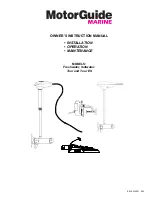
BOR/POR/PUC
circuit
Interrupt
daisy chain
and vectors
CPU
PUC
INT
NMI
RST/NMI
Password violations
.
.
.
MAB - 6LSBs
Module_A_int
Module_B_int
Module_C_int
Module_D_int
high priority
low priority
GIE
System NMI
User NMI
.
.
.
.
.
POR
BOR
System Reset and Initialization
50
SLAU367P – October 2012 – Revised April 2020
Copyright © 2012–2020, Texas Instruments Incorporated
System Resets, Interrupts, and Operating Modes, System Control Module
(SYS)
1.2.1 Device Initial Conditions After System Reset
After a BOR, the initial device conditions are:
•
The RST/NMI pin is configured in the reset mode. See
for details on configuring the
RST/NMI pin.
•
I/O pins are switched to input mode as described in the
chapter.
•
Other peripheral modules and registers are initialized as described in their respective chapters.
•
Status register (SR) is reset.
•
The watchdog timer powers up active in watchdog mode.
•
Program counter (PC) is loaded with the boot code address and boot code execution begins at that
address. See
for more information regarding the boot code. Upon completion of the boot
code, the PC is loaded with the address contained at the SYSRSTIV reset location (0FFFEh).
After a system reset, user software must initialize the device for the application requirements. The
following must occur:
•
Initialize the stack pointer (SP), typically to the top of RAM when available, otherwise FRAM location.
•
Initialize the watchdog to the requirements of the application.
•
Configure peripheral modules to the requirements of the application.
NOTE:
A device that is unprogrammed or blank is defined as having its reset vector value, residing
at memory address FFFEh, equal to FFFFh. Upon system reset of a blank device, the device
automatically enters operating mode LPM4. See
for information on operating
modes and
for details on interrupt vectors.
1.3
Interrupts
The interrupt priorities are fixed and defined by the arrangement of the modules in the connection chain as
shown in
. Interrupt priorities determine what interrupt is taken when more than one interrupt is
pending simultaneously.
There are three types of interrupts:
•
System reset
•
(Non)maskable
•
Maskable
Figure 1-2. Interrupt Priority















































